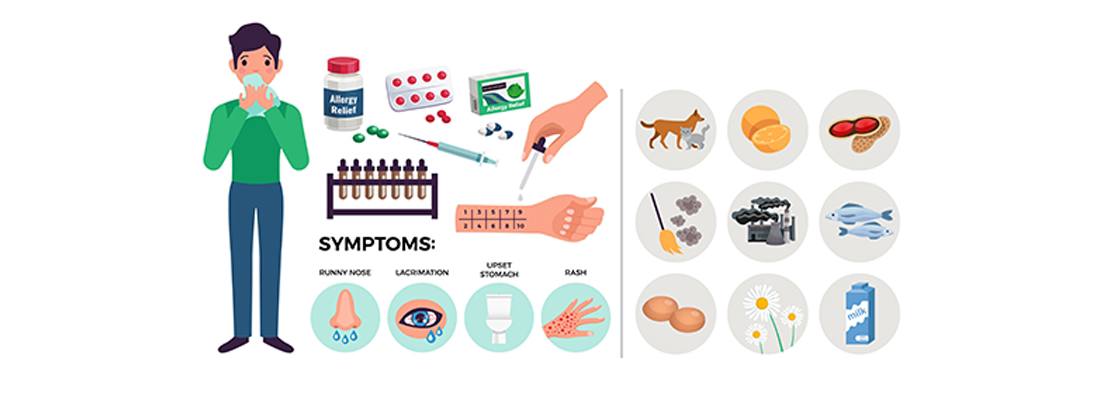Specialty: Immunology
Authors: Nelly Sadat & Abidemi Oseni
Editor: Abidemi Oseni
Overview
Anaphylaxis is an acute, potentially life-threatening systemic allergic reaction that may have a wide range
of clinical manifestations.
Anaphylaxis occurs with rapid onset, due to a variety of allergic triggers such as certain foods like animal
products or nuts, medications, and insect bites (Anagnostou, 2018). In the spectrum of all allergic
reactions, it is considered a severe form of allergic reaction (Turner et al, 2019).
Majority of anaphylaxis reactions cannot be described as life-threatening in themselves, it is the inability
to predict severity of reaction (Turner et al, 2016) that ensure emphasis is placed so that all anaphylaxis
are appropriately treated with intramuscular epinephrine/adrenaline otherwise it may be fatal in certain
cases.(Anagnostou, 2018).
Epidemiology
According to Anagnostou (2018), 50-112 anaphylactic episodes occur per every 100,000 people per year;
which means 2 out of 100 people will have anaphylaxis in their lifetime . The rate of anaphylaxis in
children of 0-4 years is observed to be almost 3 times compared to other ages (Anagnostou, 2018).
In different studies conducted in the United Kingdom, it has been shown that there is a significant
anaphylaxis increase of 4.3% per year; specifically, there was a 10% increase in food induced anaphylaxis
per year (Anagnostou, 2018).
According to Anagnostou (2018), food-induced anaphylaxis is on a rise, especially in children, and has
even led to hospitalization.
In the UK, a significant increase in food induced anaphylaxis hospitalizations has been observed in every
age group excluding children of 0-2 years (Anagnostou, 2018).
Etiology
Anaphylaxis may be triggered by certain foods like animal products/nuts, medications, and insect bites;
however there are a small percentage (20%) of patients who have experienced anaphylaxis with no
triggers involved, this is known as idiopathic anaphylaxis (Anagnostou, 2018).
Children are more susceptible to food triggers such as cow’s milk, nuts, and eggs, whereas adults are
more susceptible to drug and venom-induced anaphylaxis (Anagnostou, 2018).
Food allergy impacts 8% to 11% of children and adults in the United States, while adverse drug reactions
affect up to 10% of the population (Gupter 2019).
Other studies have identified medications and stinging insects as the leading triggers in adults, with foods
and stinging insects the most frequently implicated triggers in children and adolescents (Shaker et al
2020).
Anaphylaxis may also occur following exercise, known as exercise-induced anaphylaxis , and in rare
cases some vaccines have been reported to be of cause (Anagnostou, 2018).
The most common drug-induced triggers include antibiotics and nonsteroidal anti-inflammatory drugs; however, severe or near-death cases have a higher risk of occurring in adults (Anagnostou, 2018).
Anaphylaxis may or may not develop in the presence of cutaneous manifestations, and respiratory
symptoms are most frequent in patients who also have asthma (Anagnostou, 2018).
Symptoms
Common Symptoms
– Flushing
– Pruritus
– Hives
– Angioedema
– Shortness of breath
– Wheezing
– Nausea
– Vomiting
– Diarrhea
– Hypotension
– Cardiovascular collapse
– Respiratory collapse
– Oxygen desaturation (Castells, 2017)
Atypical Symptoms
– Chills
– Fever
– Dehydration
– Seizures (Castells, 2017)
Risk Factors
Some of the risk factors for developing anaphylaxis include:
● asthma
● croup
● bronchiolitis
● cutaneous mastocytosis
● pyrexia
● exertion
● emotional stress
● medication use
● increasing/older age
● cardiovascular disease
● alcohol
● additives
● excessive exercise
● allergic rhinitis (Anagnostou, 2018)
Drugs are the most commonly reported cause of fatal anaphylaxis in several countries, including
Australia, New Zealand, United Kingdom, Brazil, and the United States; older age has been consistently
associated with higher fatal drug anaphylaxis rate (Liew et al 2009).
In fatal food anaphylaxis
Several risk factors or “co-associations” have been implicated, however, absence of suitable controls
limits the ability to reliably distinguish associations from risk factors, and thus stratify food-allergic
individuals according to risk (Liew et al 2009).
In fatal venom anaphylaxis
The identified risk factors are age, male sex, known venom allergy. It's often characterized as allergy is a
disease of adult males, with 80% to 90% of cases occurring in men, at an average age of 50 to 60
year(Liew et al 2009).
Diagnosis
Despite this plethora of possible diagnoses, the symptoms of anaphylaxis continue to be underrecognized
for all age groups, sexes, and races, and diagnosis is often missed (Castells, 2017).
Anaphylaxis Diagnosis Through Biomarkers
This should be done within minutes after initial symptoms of anaphylaxis (Castells, 2017).
● Tryptase and other inflammatory mediators. Within a few minutes after the initial symptoms
of anaphylaxis, mature tryptase released from mast cells and basophils can be detected in serum,
this increase is transient and resolves within 24-48hrs (Castells, 2017). Commercial
immunoassays allow for detection of total tryptase(Castells, 2017).
● Skin testing. This can be done within 2 to 4 weeks after anaphylaxis, and results provide
evidence of IgE and mast cell involvement. Skin tests are highly specific for type I reactions to
foods, drugs (eg, platins), b-lactams, general anesthetics, and Hymenoptera venoms(Castells,
2017).
● Specific IgE drugs.Penicillin specific IgE has low sensitivity and is currently reserved for
patients with near-fatal anaphylaxis, in whom skin testing can be deemed unsafe(Zhao & Qiao,
2003).
● Basophil activation test. Basophils are thought to be surrogate mast cells because assessment of
human mast cells is limited to obtaining specific tissue biopsy specimens because there are no
mature circulating mast cells.
a. The test has not been US Food and Drug Administration approved or standardized,
requires activation of blood basophils immediately after extraction, and is not
commercially available (Castells, 2017).
Anaphylaxis Diagnosis Through Triggers and Phenotypes
● Food-induced, food-triggered, exercise-induced anaphylaxis. It is difficult to predict patients
at risk, and asthma has been the only predictor associated with death(Summers et al
2008).Severity of atopic disease is associated with the most severe reactions, although this is
independent of sex and age, with adults 9 times more likely to have severe reactions than children
(Summers et al 2008).
● Drug allergy and anaphylaxis. Anaphylaxis to drugs is on the rise over the last 20years and
more drugs are now implicated in patients with hypersensitivity reactions, including
chemotherapy agents, monoclonal antibodies, replacement factors, and biological agents
(Romano et al, 2004). The pattern of presentation of reactions has changed, and new symptoms
are now recognized, such as pain and chills(Summers et al, 2008).
Research shows underdiagnosis and undertreatment of anaphylaxis are common, therefore, if a patient
suspects signs of anaphylaxis, they should confirm a diagnosis with a healthcare professional to be treated
as soon as possible (LoVerde, Iweala, & Eginli, 2018).
Clinical Features
Anaphylaxis can present itself with symptoms observed on the skin (i.e. urticaria), in the gastrointestinal
system (i.e. abdominal pain, diarrhea, or vomiting), the respiratory system (i.e. dyspnea), and the
cardiovascular system, causing dizziness, hypotension and even shock (Anagnostou, 2018).
Anaphylaxis is highly likely to be diagnosed upon the observation of acute onset illness of the skin and/or
mucosal tissue, respiratory and/or cardiovascular compromise, and persistent gastrointestinal symptoms
(Anagnostou, 2018).
A minority of patients experience biphasic allergic reactions, where symptoms of anaphylaxis may
reappear after the initial reaction took place (Hernandez & Galli, 2017).
Pathological Features
Patients who have IgE reactive with oligosaccharide galactose-alpha-1,3-galactose may experience
anaphylaxis; this molecule is present in mammalian meats and therapeutic antibodies (Hernandez & Galli,
2017).
IgE dependent antibodies are typically found at high levels in patients with allergic diseases; IgE has a
binding affinity for the FcεRI receptor found on blood basophil surfaces and tissue-resident mast cells
(Hernandez & Galli, 2017). The crosslinking of FcεRI and IgE results in the immediate release of
mediators such as histamine, tryptase, cytokines, and other inflammatory mediators, which is highly
associated with an increase in allergic reactivity (Hernandez & Galli, 2017). There are however, non-IgE
mediated mechanisms involved in anaphylaxis, which are still able to activate inflammatory mediators
released by mast cells and blood basophil surfaces (LoVerde, Iweala, & Eginli, 2018).
Treatment Protocol
In the acute treatment of anaphylaxis, epinephrine is central to the management when 2 or more organs
are affected or there is laryngeal involvement or hypotension. Delaying epinephrine is associated to
increased mortality (Castells, 2017)
Pharmacological Treatment Protocol
The administration of epinephrine at a dose of 0.01mg/kg is required as the immediate form of treatment
for anaphylaxis (Anagnostou, 2018). The maximum of 0.3 mg in a prepubertal child and up to 0.5 mg in
teenagers (Sicherer et al 2017). Epinephrine contains two agonist actions in order to enable peripheral
vasoconstriction, reduce production of inflammatory mediators, and perform the reversal of
bronchoconstriction (Anagnostou, 2018).
It is most safe to be administered by intramuscular injection into the mid-outer thigh; however, side
effects of injecting epinephrine include anxiety, dizziness, headaches, and palpitations (Anagnostou,
2018).
If a patient is experiencing cardiovascular instability, they require intravenous fluids such as 0.9% saline
in boluses of 20 ml/kg in order to remove the trigger/reaction (Anagnostou, 2018).
Non-Pharmacological Treatment Protocol
Anaphylaxis may be prevented by the strict avoidance of allergens; however, if one is exposed to a severe
allergen, the use of adrenaline auto-injectors are quite successful in diminishing anaphylactic reactions
(Anagnostou, 2018).
Patients can also manage the trigger by removing it if possible, such as avoiding sudden movements,
administering high flow oxygen, or vomiting if it is a food induced anaphylaxis (Anagnostou, 2018).
Patients who experience cardiopulmonary arrest, airway, or vascular compromise must use mechanical
ventilation, vasopressors, and other forms of life support if needed in the ICU (LoVerde, Iweala, &
Eginli, 2018).
Conclusion and Future Trends
It is important to note as a clinical vignette that diagnosis of anaphylaxis should be suspected immediately
when a patient presents with acute onset of symptoms in 2 organs or acute hypotension or laryngeal
compromise in patients with and without recent food or drug ingestion or venomous sting (Castells,
2017). Pain and chills in the setting of chemotherapy infusion should be considered part of the new
phenotypic expression of anaphylaxis (Romano, 2004).Epinephrine is the mainstay of management in the
acute phase and should be administered urgently unless contraindicated (Sicherer et al,2017).
With paucity of date on the role of sex and race in anaphylaxis and trigger factor for most food and drug
allergies, there is need for further research to understand the roles of individual genes as well as gut
microbiome in pathophysiology of anaphylaxis (Castells, 2017).
References
Anagnostou, K. (2018). Anaphylaxis in children: epidemiology, risk factors, and management. Current
Pediatric Reviews. 14(3): 180-186. DOI: 10.2174/1573396314666180507115115
Castells, M. (2017). Diagnosis and management of anaphylaxis in precision medicine. Journal of Allergy
and Clinical Immunology. 140(2): 321-333. DOI: 10.1016/j.jaci.2017.06.012
Laurent, R.L., Hernandez, J.D., & S.J. Galli. (2017). The pathophysiology of anaphylaxis. Journal of
Allergy and Clinical Immunology. 140(2): 335-348. DOI: 10.1016/j.jaci.2017.06.003
LoVerde, D., Iweala, O.I., Eginli, A., & G. Krishnaswamy. (2018). Anaphylaxis. Chest. 153(2): 528-543.
DOI: 10.1016/j.chest.2017.07.033
Turner PJ,Worm M, Ansotegui IJ,El-Gamal Y et al. Time to revisit the definition and clinical criteria for
anaphylaxis? World Allergy Organization Journal (2019) 12:100066
http://doi.org/10.1016/j.waojou.2019.100066
Turner PJ, Baumert JL, Beyer K, et al. Can we identify patients at risk of life-threatening allergic
reactions to food? Allergy. 2016 Sep;71(9):1241–1255.
Gupta RS, Warren CM, Smith BM, Jiang J, Blumenstock JA, Davis MM, et al. Prevalence and 1867
Severity of Food Allergies Among US Adults. JAMA Network Open. 2019;2(1):e185630.
Liew WK, Williamson E, Tang ML. Anaphylaxis fatalities and admissions in Australia. J Allergy Clin
Immunol 2009;123:434-42
Castells, Mariana (2017). Diagnosis and management of anaphylaxis in precision medicine. Journal of
Allergy and Clinical Immunology, 140(2), 321–333. doi:10.1016/j.jaci.2017.06.012
Zhao Y, Qiao H. Detection of specific IgE antibodies to major and minor antigenic determinants in sera
of penicillin allergic patients. Chin Med J 2003; 116:1904-10.
Summers CW, Pumphrey RS, Woods CN, McDowell G, Pemberton PW, Arkwright PD. Factors
predicting anaphylaxis to peanuts and tree nuts in patients referred to a specialist center. J Allergy Clin
Immunol 2008; 121:632-8.e2.
Romano A, Gueant-Rodriguez RM, Viola M, Pettinato R, Gueant JL. Cross-reactivity and tolerability of
cephalosporins in patients with immediate hypersensitivity to penicillins. Ann Intern Med 2004;141:16-
22.
Scott H. Sicherer, F. Estelle R. Simons, et al.Epinephrine for First-aid Management of Anaphylaxis. The
Am Acad of Paed 2017:Vol 139;Issue 3.




